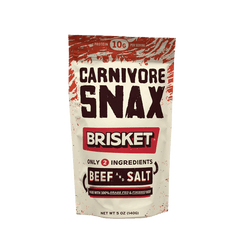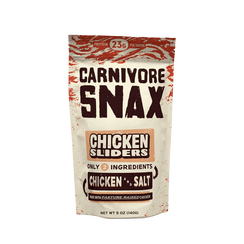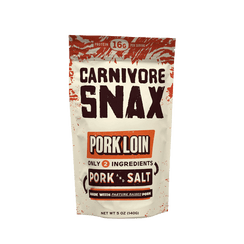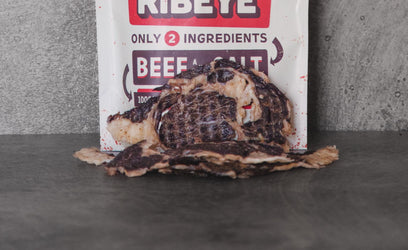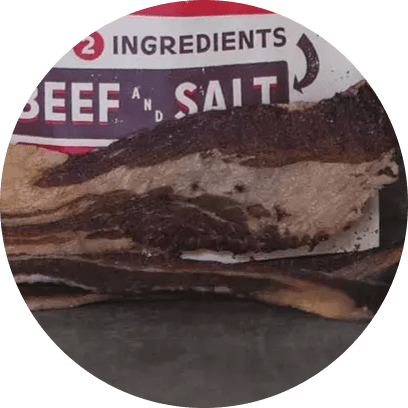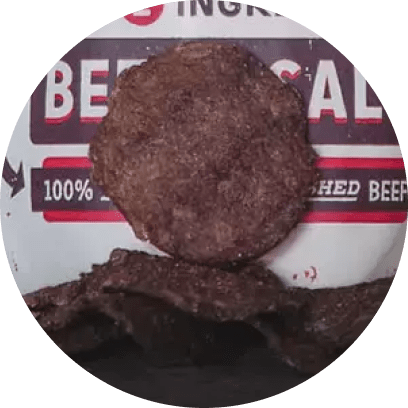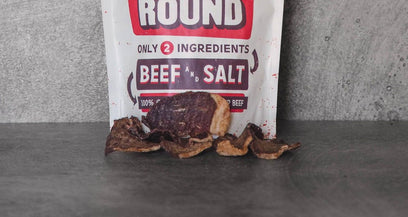THE CARNIVORE DIET BENEFITS




Once you are made aware of the implications of regenerative agriculture, you’ll have a hard time settling for less. You’re all in! And now, you want to learn how to do regenerative agriculture yourself. You’ve come to the right place - in this quick article, we’ll teach you all you need to know to raise or grow your own food in your backyard using the techniques of regenerative farming.
This will help you become less reliant on commercial agriculture - while enjoying healthier, more nutritious food along the way. And, you can feel good knowing you’re doing your part to restore our lands and lessen the footprint you leave behind on this world. To top it all off, creating and running your own regenerative farm - no matter how big or small - is a fulfilling hobby that will give your life a whole new level of purpose.
Before we teach you how to do regenerative farming on your own, let’s provide a brief overview for those who aren’t as well-versed in the topic.
First Things First - What is Regenerative Farming & Why Does it Matter?
If you haven’t read it already, our article on what regenerative farming is all about is where we recommend you start. There, you’ll learn all about the history of regenerative agriculture, the practices that go into it, and the implications of this style of farming. However, we’ll give you a quick overview of the key points below.
What is it?
Regenerative farming is a method of agriculture that focuses on building and improving the health of the soil, and in turn, the entire ecosystem. It's all about working with nature, rather than against it, to create a sustainable food system that benefits both the land and the people who depend on it.
At its core, regenerative farming is about creating healthy soil, which is essential for healthy plants and healthy animals. The idea is to use techniques that build and protect the soil, such as crop rotation, cover cropping, and reduced tillage, to promote soil health and fertility. This, in turn, leads to better plant growth and higher yields, while also reducing the need for synthetic fertilizers and pesticides.
But regenerative farming is about more than just improving the soil. It's also about increasing biodiversity, which means creating a diverse ecosystem that is better able to withstand environmental stressors such as drought and disease.
By using techniques such as intercropping, agroforestry, and polyculture, regenerative farmers can provide habitat and food for a variety of organisms, from soil microbes to pollinators to larger wildlife. This creates a more resilient and diverse ecosystem that is better able to adapt to changing conditions, while also supporting a healthy food system.
Why Does it Matter?
So, why is regenerative agriculture important for our society? Well, for one, it's essential for creating a sustainable food system that can provide healthy, nutritious food for generations to come.
Regenerative farms are more resilient to drought, extreme temperatures, flooding, pest & disease outbreak, and other conditions that can contribute to food supply issues. And, the food that is produced through these practices is safer, better tasting, and more nutritious.
But it's also critical for restoring our lands, reducing water pollution, and supporting local economies. By promoting healthy soil, biodiversity, and a sustainable food system, regenerative farming can help us address some of the biggest challenges facing our lands today. And a good starting point is learning how to do regenerative agriculture yourself - so let’s get into it!
How to do Regenerative Agriculture Yourself: Step-by-Step Guide
Starting your own regenerative farm can be a rewarding and fulfilling journey, and you’ll get some delicious outputs at the end. Trust us when we say there is nothing sweeter than tasting the fruits of your labor - especially knowing that the process of bringing it to life was focused on regenerative farming.
With that said, we want to help you manage your expectations. This isn’t as simple as throwing a few seeds out in the backyard and hoping for the best. Starting and maintaining a successful regenerative farm requires some planning and preparation. It also costs a bit of cash upfront for the inputs - like livestock or seeds - along with the equipment for taking care of the farm.
But, by the time you finish reading this comprehensive guide on starting your own regenerative farm, you’ll be well-equipped to get started. First things first - assess your land and find out exactly what you’re working with.
Assess Your Land & Come Up With a Plan
It’s important to be aware that the possibilities for your regenerative farm are influenced by the land you have to work with. Unless you’re willing to go out and purchase a new plot of land somewhere, that is. Otherwise, you’ll probably be starting in your backyard or an existing plot of land you own on your property.
From there, you know how much space you have to dedicate to your farm. You also should take note of your climate. These two factors will influence:
- The crops you are able to grow (along with the quantity of each crop)
- Whether or not you can raise animals on your farm
- How much work is necessary to get the farm ready
You should also take into account existing soil health and water availability, as these factors will influence your next steps. For example - you’ll know how much work is needed to prepare the soil for planting, and whether or not you have to come up with a means of bringing water to your farm or if a source is nearby.
But before we go any further, we need to talk about your actual goals and coming up with a plan to reach them. Do you want a thriving farm that produces all the outputs you need to live a healthy, happy life? That’s entirely possible - but be advised that this is a lot of work. Even on a small scale, managing various plants and animals is a challenge, especially if you have another job.
You may need to set your sights smaller - at least at first. The last thing you want is to go too big from the jump and end up overwhelmed. This will leave you resenting the decision to start a farm. You want the farm to be manageable - so maybe you just start with a few easy crops and some chickens. Then, over time, you can plant additional varieties and consider raising another form of livestock like cows or pigs.
You may already have some specific crops and livestock in mind that you’re eager to grow/raise. But not so fast - you also need to assess the viability of doing so in your specific region.
When choosing crops and livestock for your farm, consider what is appropriate for your climate and soil conditions. Look for varieties that are well-suited to your area and can thrive without the use of synthetic fertilizers or pesticides. Consider adding a mix of crops and livestock to your farm to create a diverse ecosystem that supports soil health. Then comes the fun part…getting out your tools and supplies and getting to work laying the groundwork.
Prepare the Land for Farming
The steps that go into preparing your land will obviously be influenced by the existing conditions you have to work with. But, this phase of your farm is also dictated by what you’re looking to grow or raise.
Maybe you need to improve soil health by reducing tillage, planting cover crops, and adding organic matter like compost to the soil. We recommend starting with a robust soil test so your next steps can be targeted and practical.
Or, perhaps you need to build a chicken coop or a pig pen if you plan on raising livestock from the start. Again - the preparation phase will be driven by the plan you came up with previously. Once you have your farm ready for its new inhabitants, it’s time to source them and get them situated.
Best Practices for Planting Crops or Bringing Livestock to Your Farm
Frankly, getting plants situated in the ground and taking root is more work than bringing livestock to your farm and letting them graze. Many of your favorite crops are more fickle than you think! So - we’ll start by providing best practices for actually planting your crops:
- Determine the best planting time: Research the best time to plant your crops based on your location, climate, and the specific crop you want to grow. Consider the amount of sunlight, temperature, and moisture needed for each crop. We know you’re eager to get your farm up and running, but if its the dead of winter, you’re just going to have to be patient and wait for spring.
- Prepare the soil: Clear the planting area of any weeds or debris, and till the soil to break up any clumps. Consider adding compost or other organic matter to the soil to provide essential nutrients for your crops.
- Plan the layout: Plan the layout of your crops to ensure adequate spacing for growth, efficient watering & harvesting, and to prevent overcrowding. Consider using companion planting techniques to maximize space and promote healthy plant growth.
- Plant the crops: Follow the planting instructions for your specific crop, including depth, spacing, and any other requirements. Be sure to water your crops immediately after planting.
Now - in terms of getting your livestock acclimated to their new home, it’s actually fairly simple. We just want to offer a word of caution in regard to the actual sourcing. These animals aren’t cheap - so getting healthy, well-cared-for animals from reputable sources is of the utmost importance.
Once you have your animals on the farm, get them into their routine - whether that be grazing certain areas or getting locked up in their coop by nightfall so they’re safe from other critters. And from this point on, it’s just a matter of managing the farm and making sure all life is thriving.
Follow Regenerative Farming Guidelines
Once your plants are rooted and your animals are acclimated, much of the hard work is done. Now it’s just a matter of following regenerative farming guidelines to keep the crop and livestock happy and healthy. And if you came here to learn how to do regenerative agriculture, this is likely the section you’re most interested in.
Regenerative farmers prioritize natural pest control methods, rather than relying on chemical pesticides. This includes using beneficial insects, such as ladybugs and praying mantises, to control pests, as well as rotating crops and planting cover crops to prevent pest infestations.
Similarly, you’ll want to use compost rather than commercial fertilizer. If you have a farm with both livestock and plants, you can use the waste from livestock as a great natural food source for your plants.
Speaking of which, if you plan to raise livestock, it’s important to practice rotational grazing. Regenerative grazing practices can improve soil health and support a diverse ecosystem. This involves rotating animals through different pastures, allowing them to graze on a variety of plants and grasses. It also helps to prevent overgrazing and soil erosion - creating a better ecosystem for your farm in the future while allowing your animals to live their lives as they were meant to.
Here are a few other important techniques used on regenerative farms that you’ll want to research further and verse yourself in:
- Minimize tillage: Tillage is the process of breaking up the soil to prepare it for planting. While tillage can be useful for controlling weeds and creating a seedbed, it can also damage soil structure and reduce soil health. Regenerative farmers aim to minimize tillage by using reduced tillage or no-till methods.
- Save seeds: Saving seeds from your crops can help to preserve genetic diversity and adaptability in your plants. It also allows you to select traits that are well-suited to your local growing conditions. Regenerative farmers often save seeds from their best-performing plants for use in future crops.
- Use renewable energy: Regenerative farming is often associated with sustainability and environmental responsibility. Using renewable energy, such as solar panels or wind turbines, can help to reduce greenhouse gas emissions and lower your farm's carbon footprint.
- Support local ecosystems: Regenerative farmers aim to support local ecosystems by planting native species, creating habitat for wildlife, and minimizing their impact on the environment. This can include planting hedgerows or wildflowers, using compostable or reusable packaging, and reducing water usage.
If you want to learn more about how regenerative agriculture works in practice, read our full guide. But let’s bring this conversation full circle by talking about harvest.
Harvest, Store, and Enjoy the Fruits of Your Labor
Eventually, the time will come for you to actually enjoy the fruits of your labor - and this is perhaps the best part of learning how to do regenerative agriculture. Seeing the process through to the end and getting to reap the benefits of what you’ve worked so hard for.
Maybe your chickens are laying eggs - or maybe your cows are ready for milking. Or, maybe it’s time to send pigs to the butcher. Perhaps your crops are mature and ready to be cut down and harvested.
Either way, it’s important to leverage professional help on the actual process of harvesting and storing your crops or the outputs of your livestock - as specific recommendations vary depending on what you’re raising/growing.
In general, though, you’re going to end up with way more than you need at any given time - which presents a few opportunities. You can consider using natural methods like canning, pickling, and fermenting to preserve food for the long term. Or, you can share the wealth with your neighbors, family, or friends.
The best part of regenerative farming is enjoying the delicious, nutritious food that you've grown yourself - so take the time to savor the flavor and appreciate the hard work that went into creating your food. It’ll taste even better knowing you’ve followed regenerative farming practices to get here!
Parting Thoughts on How to do Regenerative Agriculture
As you can see, learning how to do regenerative agriculture yourself is a tall task - but it’s entirely possible. Whether you grow a few herbs and veggies in your backyard or you start a full-fledged farm on your property, this is a great way to support regenerative agriculture, save money, and give your life a whole new meaning.
But - if after reading this guide you’re not quite sure you’re up to the challenge, that’s ok. Maybe you’re too busy at this point in your life and can revisit the opportunity in the future. For now, there are still ways to support regenerative farming - like shopping with brands that employ these practices themselves.
That’s what we do here at Carnivore Snax with our meat chips - which are known as the best low carb snacks on the market! With just two ingredients - meat and salt - these are as healthy and nutritious as it gets. The tantalizing taste leaves you totally satisfied, and you’ll fall in love with the melt-in-your-mouth texture. And with so many different flavors to choose from you’ll never get bored either - we have ribeye chips, steak chips, lamb chips, beef chips, brisket chips, chicken chips, and pork chips. The only question is, which will be your favorite?
Whether you’re looking for snacks for carnivore diet or you just want to eat a higher-protein diet - you’ll love Carnivore Snax even more knowing we only source our meat through the most elite, ethical brands in the USA that rely on regenerative farming techniques.
So - what are you waiting for? Even if you follow through on our guide on how to do regenerative agriculture yourself, stock up on some of our delicious carnivore chips and support this practice to the fullest!












